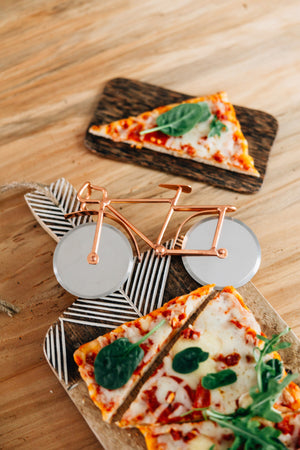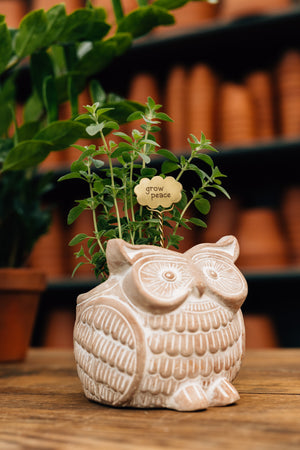
Local Veggies, Global Flavor
With the constant surge of new technology has come a collective urge to slow down, to appreciate the simple things, and to go back to the old ways of doing things. Because technology has made things so fast, that it’s often hard to keep up! And when efficiency takes priority over quality, we wind up with waste, pollution, and unhealthy food. Food is more convenient than ever. We can have any kind of produce we want, regardless of season or location. Entire meals are pre-prepared and packaged neatly in little boxes, and within minutes, a microwave can feed a family of four.
There are children who have never seen a vegetable garden, and think that food is made in grocery stores. It didn’t used to be this way. And there are actually sustainable methods of preserving local produce so that it will last all year long.
Our friend Jim King grew up around things growing in the ground. In his childhood, gardens were a chore, but as he grew older, he began to appreciate everything that goes into keeping a good garden, and his travels around the world exposed him to all kinds of techniques and ingredients that he has adopted in his canning and pickling practices, which have become a treasured pastime.
Jim has worked for Ten Thousand Villages since it was called Self Help Crafts and was a member of the team who rebranded the company in 1996. Before that, he worked in Bangladesh with Mennonite Central Committee MCC, a relief and development organization, to help artisans form a handmade paper workshop. His roots in fair trade have introduced him to all kinds of people and shaped his a global worldview.
Since he is our resident pickling and canning expert, we decided to ask him for a few tips on what goes into a great canned dish, and how to get the most out of our local veggies with global flavor.
Q: How did you first get into gardening and canning?
When I was a child, my father and mother had a large garden. We canned and froze food for the colder months. My siblings and I were their indentured servants, and out of everyone in the family, they all said that I complained the most. I went to college at 17 and then at 53 I moved to the country and got interested in gardening and all those childhood skills came roaring back with a creative curiosity about raising my own food.
Q: Do you have any basic tips for getting started?
Food preservation is very vogue with the farm–to-table and CSA (community supported agriculture) movement. All you have to do is Google “how to freeze or can a tomato” and there will be 500 people on the internet yapping about their glorious ventures with the garden. There also many good books out there. It is an amazing time to be alive.
Q: What kinds of spices/ vinegars do you use? Are these flavor combinations typical to a specific region, or did you just work with them to find what works best for you?
I got started some years ago by Googling “tomato preservation.” Up popped a caponata Italian antipasti recipe. It is so outstanding that I make a big batch and can it for the winter. Garlic, onion, oregano, sea salt and cracked pepper with tomatoes, and eggplant. Olive oil, sometimes balsamic vinegar.
Q: What countries have you travelled to? What tricks did you pick up from visiting people in other places?
Many countries in Asia, my favorite is India. I watched them cook if I could, they will let anyone in their kitchens. I learned about mother curry, dry frying, fresh versus dry spices, grinding spices fresh on the spot, wet spices, vegetarian curries and bhajis. So wide and vast is the Indian cooking repertoire from region to region, state to state, representing centuries of passed down fabulous family recipes.
Q: I’ve never heard of “mother curry.” Can you tell us more about that?
Visit the kitchen of any busy curry house and you are almost certain to see a saucepan of curry sauce simmering away on the stove. This sauce is used as a base for most of the restaurant’s curries. Each restaurant has their own special recipe, but they are usually similar. The base sauce makes it possible for chefs to cook, plate and serve many different curries quickly and easily.
Q: And what’s the difference between wet and dry spice?
Dry spice is freshly ground dry spices sometimes pan roasted and then fried in oil to start out a curry. Wet spice serves the same purpose, but includes ginger or garlic that are ground on a grinding stone with dry spices to form a paste.
Q: What are the reasons for traditions in canning/ pickling/ preserving?
People needed food in the off months of the growing season.
Q: Do you have a favorite kind of pickled veggie?
Carrot pickle, eggplant, chard and garlic pickle.
Q: What do you have growing in your garden right now?
Eggplant, tomato, okra, sweet potato, sweet corn, bitter melon, butternut squash, onion, cabbage, sweet and hot pepper.
Q: Why do you keep your own vegetable garden? Do you try to always buy/ eat local produce, if you can?
I try to focus all my cooking this time of year on my own garden output.
Q: How would you prepare these veggies with a global twist?
Spice it up! In contrast to Western cuisines (that typically use herbs with garlic and onion as foundational seasonings), it’s very common to find combinations of multiple spices in most parts of Asia.
Q: Can you elaborate on the background behind your favorite global recipes?
The Italian caponata recipe I learned about in Italy some years ago at a restaurant— it is a common antipasti dish served with crusty bread, frequently with a good red wine. The Indian recipes I use are from my MCC experience as a development worker in Bangladesh. I ate curry every day for four years prepared by a personal household barbuci (cook). I vacationed in India 14 times as it is next door and easy to get to from Bangladesh.
While tending your own garden and preserving veggies for the off-season may take some time and knowledge, there is so much value and enjoyment that comes from sourcing and preparing your own food. Jim combines the familiar garden of his youth with the new spices and flavor combinations gathered along his journeys to create one cohesive dish to nourish not only the body, but the soul as well. Traveling with open ears, eyes and an open mind is the best way to learn about many facets of culture. And food is one of them.
Where would you embark on your quest to find the next great flavor combination?
– 8 medium eggplants
– 12 medium size tomatoes
– 6 onions
– 1 garlic bulb
– olive oil
– sea salt (to taste)
– cracked pepper (to taste)
– lemon juice
1. Preheat oven to 425’F.
2. Cube eggplants and tomatoes, quarter onions, and mince the garlic.
3. Divide cut vegetables between two deep baking pans (cookie sheet size), one for each shelf of the oven.
4. Add olive oil to each pan, enough to coat each piece of vegetable.
5. Add sea salt and cracked pepper to taste.
6. Mix all of the ingredients with your hands to distribute olive oil and spices.
7. Put in oven for 40 minutes, at the 20 minute point pull pans from oven, remix with large spoon to redistribute juices and prevent drying out of vegetables. Return to oven and finish roasting.
8. Position a large pot on the stove, transfer vegetables and bring to a boil.
9. Position 4 quart glass canning jars in the oven at 250’F for 20 minutes to sterilize. Place canning lids in small water bath and slightly boil for 5 minutes.
10. Ladle caponata into each jar, include 1 tsp of lemon juice, leaving 1/2″ space at top of jar.
11. Put lid and ring on jar being sure there is no food on the jar lip for secure lid bond. Screw ring till just resistance, not necessary to screw ring on hard. Let jars cool and wait for the signature “pop” sound that indicates jar is sealed.
When serving, add kalamata olives and some dried oregano if desired.










Leave a comment